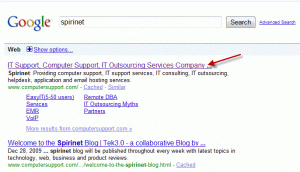Google+ and its New Features – Part 1
Google is barging back into the social network space, attempting to leverage its giant email user-base with a new security-focused offering called Google+.
Google+, launched just a year after the tech behemoth’s first, widely criticized foray into social media, Google Buzz, is also full-frontal attack on social networking heavyweight, Facebook. Google is making a real attempt to build on the perceived weaknesses of existing networks.
Privacy is Key
The big battleground will be privacy. Facebook has come under increasing scrutiny for defaulting to the loosest security settings – Facebook chief executive Mark Zuckerberg famously claimed that privacy is dead in the social networking age – and Google Buzz, too, came under fire for taking insufficient account of security concerns.
In response, Google+, which is currently still in “field-testing” phase, allows users to separate their network of contacts, or ‘connections’, into invisible ‘circles’, so users can control who gets to see what information. Connections can easily be swapped between groups – colleagues, friends or family, for instance – by dragging and dropping, which could be a big plus for Facebookers frustrated at the daunting prospect of sorting their giant network of friends into new groups after the fact.
Like Facebook, Google+ allows users to send messages to one another, via browser or smartphone, and upload image and video albums. Notifications and posts are displayed in a familiar-looking news feed, or ‘stream’. And instead of ‘liking’ a post, Google+ users can hit a ‘+1’ button.
Stay tuned next week for more on Google+!

